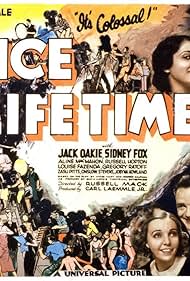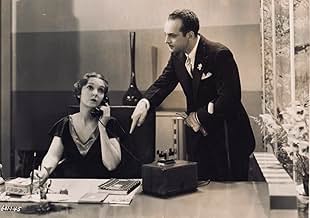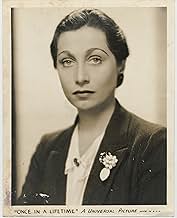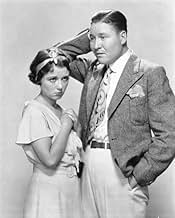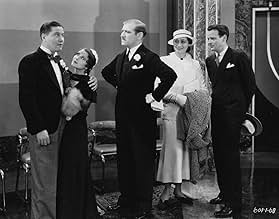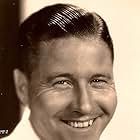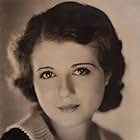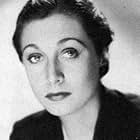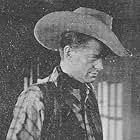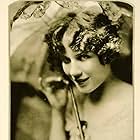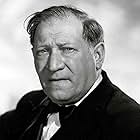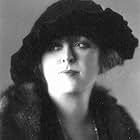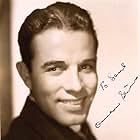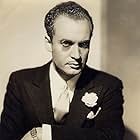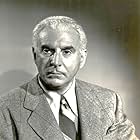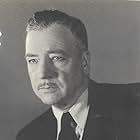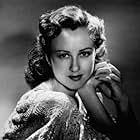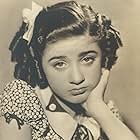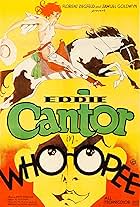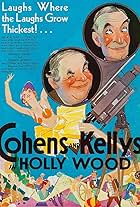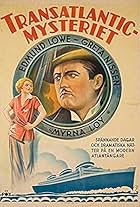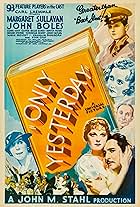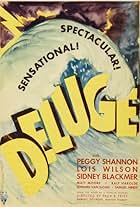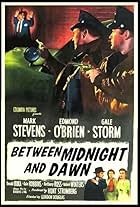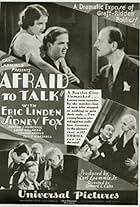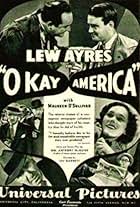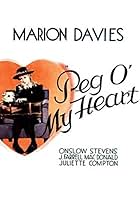Story of a Hollywood studio during the transition from silents to talkies.Story of a Hollywood studio during the transition from silents to talkies.Story of a Hollywood studio during the transition from silents to talkies.
Johnnie Morris
- Weiskopf
- (as Johnny Morris)
Walter Brennan
- Lighting Technician
- (uncredited)
Ralph Brooks
- Studio Actor
- (uncredited)
Edith Fellows
- Flower Girl in Movie Wedding Scene
- (uncredited)
Leyland Hodgson
- Reporter
- (uncredited)
- Director
- Writers
- All cast & crew
- Production, box office & more at IMDbPro
Storyline
Did you know
- TriviaAline MacMahon created the role of May Daniels in the first tryout of the play. (Source: Moss Hart's autobiography 'Act One'.)
- Quotes
Herman Gloguaer: What did they have to go and make pictures talk for? Things were going along fine. You couldn't stop making money - even if you turned out a good picture you made money.
- Crazy creditsThe opening credits are followed by a written message from producer Carl Laemmle saying critics had questioned whether he would use the material that "so mercilessly and so hilariously poked fun at Hollywood and its motion picture people." But, he says, laughter is needed "in times like these."
- ConnectionsReferenced in The Flash: Be My Baby (1991)
Featured review
This film has the look of the early 30's Paramounts and the fast pace of the Warner films of that same era, but oddly enough this is a Universal property, and it's hilarious from start to finish.
This is a rare opportunity to look at the transition from silent to sound film only five years out from the release of the Jazz Singer, and yet the same myths that are shown in 1952's "Singin in the Rain" are shown here twenty years earlier. The main myth is that the Jazz Singer was an all talking picture that caused an abrupt revolution in filmmaking from silent to sound and was causing the death of vaudeville even in 1927. In fact, The Jazz Singer was all-silent except for 20 minutes of sound and 90% of that was musical, not talking. Nobody took talking pictures very seriously until mid 1928 when the first all-talking picture "Lights of New York" was released and made tremendous profits in spite of its dismal attempt at art. However, the myth is funnier than the truth, so that is probably the reason that it is shown as fact here.
George Lewis (Jack Oakie) and May Daniels (Aline MacMahon) are vaudevillians that are finding employment increasingly difficult due to the birth of the talkies. Jerry Hyland (Russell Hopton) tells them they should all make the trip from New York to Hollywood and pretend to know something about talking before the camera since the entire town is in chaos. Jerry claims that the big money is not so much in acting, but in helping the bosses and the actors make the transition. They decide to declare themselves elocution instructors. They put on airs with a Hollywood reporter who takes them seriously and makes an introduction for them to Herman Glogauer, head of Glogauer Pictures, played hilariously by Gregory Ratoff.
Once in Hollywood they get introduced to the studio's biggest stars - one is dressed up like Theda Bara and the other Mary Pickford - who are now useless to Glogauer because they cannot speak, and are their first assignments. They also meet a playwright who was told it was urgent that he come to the studio immediately and begin work and has been there six months in a big office with a fat paycheck but nothing to do. He's slowly going crazy sitting in a waiting room for an appointment with Glogauer that never comes while dealing with a dizzy secretary (Zasu Pitts) who can never remember his name or what he wants. There are also pages that walk about the studio halls with big cards around their necks saying who is in conference and where - probably a dig at title cards that hung around in talking pictures because writers initially did not know how to transition between scenes without them.
The long and the short of it is that not only does the emperor have no clothes here, he can't seem to tell who does or does not have clothes himself. This causes the dense member of our vaudeville trio - George - to rise in the ranks to director and become considered a genius of early talking film in spite of the fact that he does everything wrong. The reviewers love his work and think his actual technical errors are high art. They even compare him to Eugene O'Neill. Audiences follow these rave reviews in throngs and result in sell-out crowds for George's film. Also, a rather cute but simple girl George met on the train west whose only talents are her ability to recite Kipling's "Boots" and George's attraction to her becomes a huge star in spite of the fact she can't act. Can George keep up this charade, in spite of the fact that he isn't really bright enough to know it's a charade? Watch and find out.
There isn't a moment of wasted space in this film, and that doesn't mean it's unnecessarily busy either. It's full of wise cracks and observations about the movie business at that time that are priceless. The best delivered remarks come from the amazing yet underrated Aline MacMahon, the philosopher of the group, as she makes biting commentary with an attitude that shows she's resigned to dealing with a world gone mad around her. I only wish that I could find a better print as there is so much going on, especially on the early sound sets, that it would be nice to be able to see more detail.
This is a rare opportunity to look at the transition from silent to sound film only five years out from the release of the Jazz Singer, and yet the same myths that are shown in 1952's "Singin in the Rain" are shown here twenty years earlier. The main myth is that the Jazz Singer was an all talking picture that caused an abrupt revolution in filmmaking from silent to sound and was causing the death of vaudeville even in 1927. In fact, The Jazz Singer was all-silent except for 20 minutes of sound and 90% of that was musical, not talking. Nobody took talking pictures very seriously until mid 1928 when the first all-talking picture "Lights of New York" was released and made tremendous profits in spite of its dismal attempt at art. However, the myth is funnier than the truth, so that is probably the reason that it is shown as fact here.
George Lewis (Jack Oakie) and May Daniels (Aline MacMahon) are vaudevillians that are finding employment increasingly difficult due to the birth of the talkies. Jerry Hyland (Russell Hopton) tells them they should all make the trip from New York to Hollywood and pretend to know something about talking before the camera since the entire town is in chaos. Jerry claims that the big money is not so much in acting, but in helping the bosses and the actors make the transition. They decide to declare themselves elocution instructors. They put on airs with a Hollywood reporter who takes them seriously and makes an introduction for them to Herman Glogauer, head of Glogauer Pictures, played hilariously by Gregory Ratoff.
Once in Hollywood they get introduced to the studio's biggest stars - one is dressed up like Theda Bara and the other Mary Pickford - who are now useless to Glogauer because they cannot speak, and are their first assignments. They also meet a playwright who was told it was urgent that he come to the studio immediately and begin work and has been there six months in a big office with a fat paycheck but nothing to do. He's slowly going crazy sitting in a waiting room for an appointment with Glogauer that never comes while dealing with a dizzy secretary (Zasu Pitts) who can never remember his name or what he wants. There are also pages that walk about the studio halls with big cards around their necks saying who is in conference and where - probably a dig at title cards that hung around in talking pictures because writers initially did not know how to transition between scenes without them.
The long and the short of it is that not only does the emperor have no clothes here, he can't seem to tell who does or does not have clothes himself. This causes the dense member of our vaudeville trio - George - to rise in the ranks to director and become considered a genius of early talking film in spite of the fact that he does everything wrong. The reviewers love his work and think his actual technical errors are high art. They even compare him to Eugene O'Neill. Audiences follow these rave reviews in throngs and result in sell-out crowds for George's film. Also, a rather cute but simple girl George met on the train west whose only talents are her ability to recite Kipling's "Boots" and George's attraction to her becomes a huge star in spite of the fact she can't act. Can George keep up this charade, in spite of the fact that he isn't really bright enough to know it's a charade? Watch and find out.
There isn't a moment of wasted space in this film, and that doesn't mean it's unnecessarily busy either. It's full of wise cracks and observations about the movie business at that time that are priceless. The best delivered remarks come from the amazing yet underrated Aline MacMahon, the philosopher of the group, as she makes biting commentary with an attitude that shows she's resigned to dealing with a world gone mad around her. I only wish that I could find a better print as there is so much going on, especially on the early sound sets, that it would be nice to be able to see more detail.
Details
- Runtime1 hour 31 minutes
- Color
- Aspect ratio
- 1.37 : 1
Contribute to this page
Suggest an edit or add missing content

